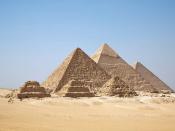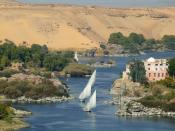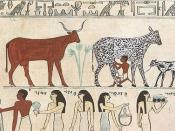The Recovery of Ancient Egyptian Artifacts
"More than 1,000 bronze artifacts retrieved from sea off Egypt's north coast", in The Canadian Press. A French archaeological team has found over a thousand bronze Egyptian artifacts in the Mediterranean Sea. The artifacts were found just off Egypt's northern coastline. The team found statues of various Pharaoh gods and goddesses. Researchers believe that the most impressive item found was a diorite bust of an unidentified lady with long hair. Some believe that it could be the Nile god, Hapy. All of the artifacts that were found have been removed to be cleaned and restored. Mohamed Abdel Maqsoud, a senior official in the Supreme Council of Antiquities said, "The artifacts found during archaeological surveys last month date to the 3rd through 5th centuries B.C..."(The Canadian Press). Along with the statues and busts, the team recovered ancient tools and containers believed to be used in Egyptian religious rituals (The Canadian Press).
The artifacts recovered fit into the ancient Egyptian period. It is much easier to comprehend the history of the Egyptians when we are able to look at the evidence of their existence. I understand why the researchers feel that finding the believed Nile god, Hapy is so important. The Egyptians worshipped the Nile god to a great extent, mainly because the Nile River would flood and their crops would prosper. They referred to the floods from the Nile River as the "Gift of the Nile" (Perry 14). Also, finding the ancient statues and busts of other pharaohs, gods, and goddesses are still important. The pharaohs were treated as living gods and their bodies were continually worshipped and preserved after their deaths. The pyramids were built to hold the tombs of the important figures being worshipped in the Egyptian civilization (Perry 15).


